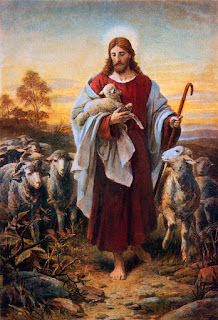Alessandro Raho: Young Kim (2022)
Oil on canavas (110 x 180 cm)
I.
Viewing Alessandro Raho's latest portrait of Young Kim at a recent event in London [1] and listening to what was said in a three-way conversation between the artist, the sitter, and the critic Michael Bracewell about the complex relationship between art, fashion, music and sex, one couldn't help but think of D. H. Lawrence's dismissive assessment of English painters; not so much devoid of genuine feeling for visual imagery, as full of fear of the body as a site of various forces, flows, and sicknesses.
It is this fear, says Lawrence, which distorts their vision and suppresses their instinctive-intuitive consciousness.
Still, every cloud has a silver lining and this act of suppression did at least enable English artists of the 18th-century to become the best in the world at painting clothes. For painters such as Hogarth, Reynolds, and Gainsborough, it is clear that the coat matters more than the man.
Lawrence writes:
"An old Reynolds colonel in a red uniform is much more a uniform than an individual, and as for Gainsborough, all one can say is: What a lovey dress and hat! What really expensive Italian silk! This painting of garments continued in vogue, till pictures like Sargent's seem to be nothing but yards and yards of satin from the most expensive shops, having some pretty head popped on at the top. The imagination is quite dead. The optical vision, a sort of flashy coloured photography of the eye, is rampant.
In Titian, in Velasquez, in Rembrandt the people are there inside their clothes all right, and the clothes are imbued with the life of the individual, the gleam of the warm procreative body comes through all the time [...] But modern people are nothing inside their garments, and a head sticks out at the top and hands stick out of the sleeves, and it is a bore." [2]
II.
Alessandro Raho appears to follow in this tradition, as the above portrait of Young Kim illustrates. It is a beautiful rendition of a multicoloured mohair jumper by Kim Jones for the Louis Vuitton S/S 2017 menswear collection, but the woman inside the jumper seems to have simply faded away into the blank void of the background; just a head and neck sticking out of the top of the punk-style sweater and two tiny hands sticking out of the sleeves.
But, having said that - and having seen the work up close and spoken with the artist - I can't help being impressed by it and by him.
First of all, he didn't seem to me to be gripped with fear at all; nor simply following in the footsteps of those famous names who came before him and whom Lawrence dismissed. In fact, Raho seems to gently mock the laughably old-fashioned tradition of portraiture by refusing to dramatise or idealise the figures he paints [3] and by having them return our gaze with interest (so that we are objectified in the process of viewing).
As for Lawrence's concerns about Kodak vision, well, it is true that Raho does work from photographs, but, interestingly, he employs his skill as a painter to somehow capture something that the camera lens cannot; something that might be termed (for want of another word) presence.
Raho is not simply aiming for realism in his portraits, so much as longing nostalgically for the same thing Lawrence desired; i.e., to come into touch, even when he knows this is no longer an easy matter when we have all become digital images to one another within a virtual universe.
Perhaps having intuitively reached a similar conclusion to Lawrence about portrait painting, Raho has decided to push the process that the latter describes to its limit. The picture of Young Kim is thus deceptively straightforward and innocuous; for it is, as Nietzsche would say, superficial out of profundity [4].
Notes
[1] The event took place on Monday 28th November (7-11pm) at the bookstore-cum-library-cum arts venue Reference.Point (London, WC2). It was held to celebrate the launch of the trade edition of Young Kim's unique little red book A Year on Earth with Mr. Hell (2020).
A reading from the work was followed by a discussion with Michae Bracewell and Alessandro Raho in the presence of the latter's latest painting of Young Kim. There was also an informal screening of Malcolm McLaren's video project Shallow 1-21 (2009), although, sadly, no one seemed to pay much attention to this.
[2] D. H. Lawrence, 'Introduction to These Paintings', in Late Essays and Articles, ed. James T. Boulton, (Cambridge University Press, 2004), pp. 193-94.
[3] This desire to make art which is both contemporary and commonplace is of course crucial to a realist aesthetic and, however else we might describe Raho's work, we can almost certainly say it's a form of realism - though what kind of realism is debatable.
[4] See section 4 of Nietzsche's 1886 Preface to The Gay Science, where he writes that in order to live in a Greek manner we must remain courageously at the surface of the skin, the fold of the dress; i.e., learn to adore appearance and trust in forms.
Cf. my interpretation of Raho's work with that of Michael Bracewell, who argues that the portraits are concerned with "emotional and psychological depth". See Bracewell's essay in The Art of Alessandro Raho (Lund Humphries, 2011).
.jpg)


.jpg)
.jpg)
.jpg)
.jpg)
.jpg)
.jpg)

.jpg)
